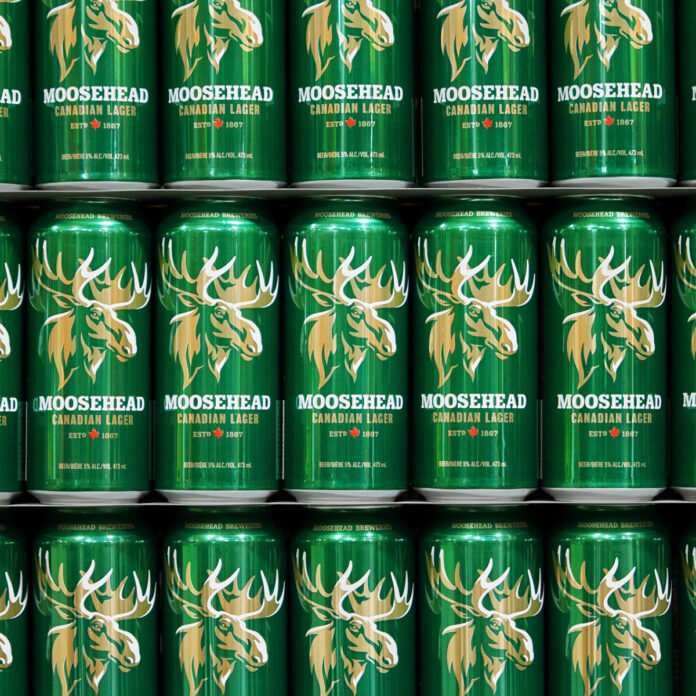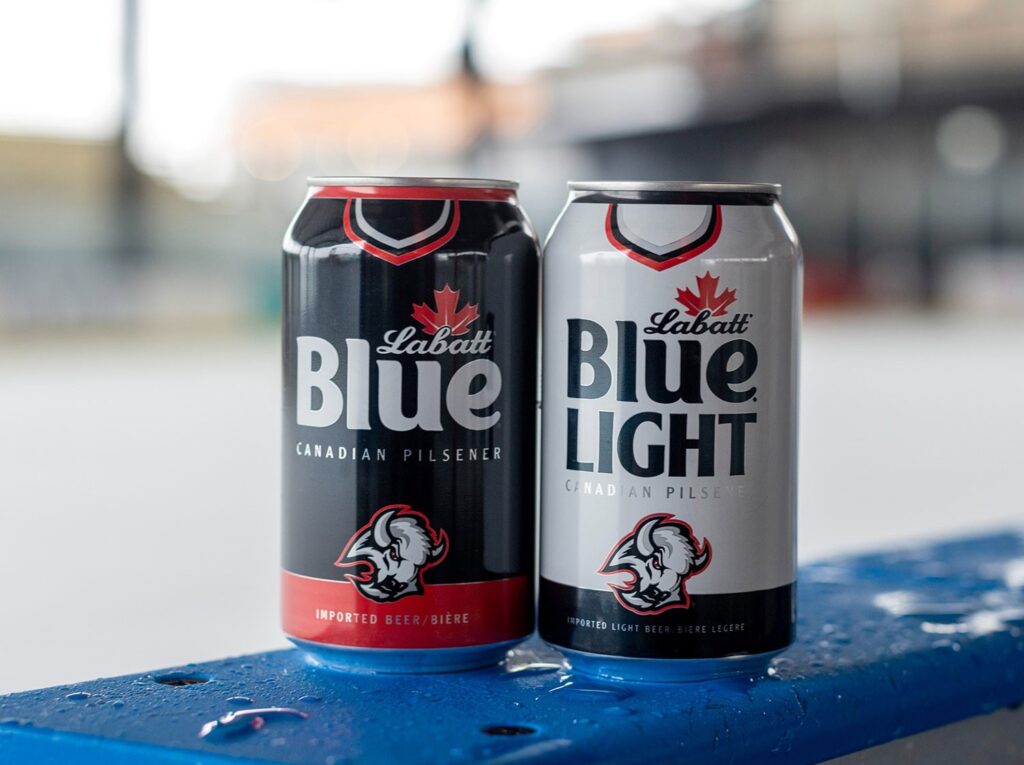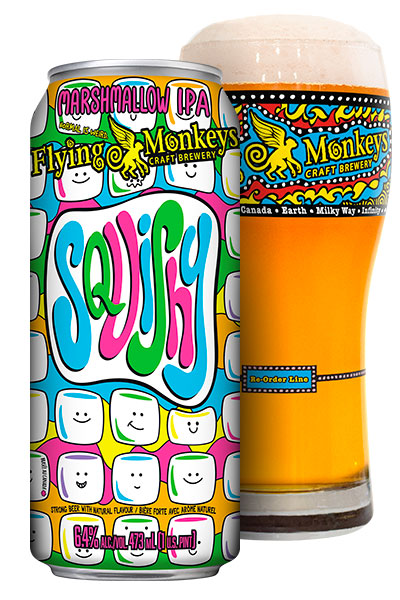
Canadian beer continues to resonate with U.S. consumers. From emerging craft brands to off-the-wall releases to macro mainstays, products from up north have found a welcome home down south across the border. Especially in places like New England, Ohio and other upper midwestern states.
Why is this? A number of factors fuel the enduring strength of Canadian beer in America.
For one, the category taps into the general popularity of imported brews. That broad category was up 8.8% versus last year in the last 48 weeks of chain store scans, according to data provided for this article by the Canadian producer, Moosehead Breweries. Of course, much of that growth is made up of the explosive rise of Mexican beers. Canadian itself was up 3.2% versus last year, still a healthy gain at a time when the overall beer category is largely flat or down.
Heritage and Provenance
Another factorcontributing to good sales is the impressive heritage Canadian brands. Moosehead was founded in Saint John, New Brunswick, in 1867. The company is still privately owned and operated by the Oland family, now in its sixth generation of ownership.
Other Canadian breweries enjoy similarly rich histories.
“Labatt was founded in 1847,” points out Jason Folaron, brand manager for Labatt USA. “Molson was founded in 1786. That’s before Anheuser Busch, Miller or Coors were founded. There’s real heritage and history behind Canadian beer.”
Which helps at a time when many U.S. consumers gravitate towards brands with interesting backgrounds that are fun to learn about.
“We’re definitely going to talk more about the history of Labatt in our marketing and promotions in 2024 and 2025,” Folaron says. “Retro is massive right now. We’ve been asked to bring back our retro stubby bottles. Younger consumers are looking for heritage in brands, but in a unique and updated way.”
“We’re also going to talk more about the ingredients, this and next year,” he adds.
Here is another differentiator for Canadian beers: the appeal of provenance from up north.
“Canadian barley just tastes different than other beers’ barley,” Folaron says.
Canada and its beautiful environment both serve as superb branding tools.
“Moosehead continues to resonate with its American drinkers through a shared love of great beer and the great outdoors,” says Stephanie Wardell, Moosehead director of commercial transformation.
Agreeing with her is Evan Cohen, the president and CCO of the fast-growing nonalcoholic Canadian brewer Partake.
“There’s a really good beer-drinking culture in Canada, based around sports, the outdoors lifestyle, hunting and fishing,” Cohen says. “It makes people feel good about the beer.”
This is a common sentiment throughout the industry.
“It goes back to the vacation mentality,” explains Dave Esber, owner of Esber Beverage Co. (founded in 1937) and Craft Beers of Canada. Their imports portfolio includes half a dozen Canadian craft breweries. “Everything tastes better on a vacation. People go up north for vacation and bring back that sentiment” in the way that they think of Canadian beers.
Esber, too, sees natural resources as a benefit to Canadian products.
“Ninety-seven percent of beer is water, and all major rivers run towards the equator in the Northern Hemisphere,” he says, implying a greater purity in the water up north before it flows southward.
Natural resources can also include a country’s citizens.
“The types of people who live in Canada, they tend to be more on the frontier, and they take more chances,” Esber says. “People who work in Canadian breweries have great passion for the beers that they brew.”

New Age in Canadian Beer
While the Canadian brewing industry contains number of legacy breweries with roots into the 19th century or later, the country also boasts a thriving craft scene. Ontario is known for its craft beer culture, while individual cities like Toronto, Vancouver and the smaller Penticton contain much-celebrated scenes.
Esber from Craft Beers of Canada works to identify producers from this category that he thinks will work in the American market. Successfully importing these craft breweries since the mid-2000s, he is picky, settling on only a small group.
“You’re looking for breweries that can distinguish themselves from the mass produced,” he says. For instance, his portfolio includes Flying Monkeys Craft Brewery, a common sight for anyone who has bought beer in the Northeast or Upper Midwest America.
“They will really push the bubble with what they brew,” Esber explains. “Their motto is ‘Life is Weird’.”
Flying Monkeys’ eclectic offerings include Squishy, a Marshmallow IPA; Psychedelic Puzzle Factory, a bumbleberry custard DIPA; Chocolate Manifesto, a triple chocolate milk stout; and 12 Minutes to Destiny, a hibiscus pale lager.
“Some Canadian breweries are pushing the bubble more because they have to, in order to distinguish themselves. Distribution can be limited up there,” Esber says. “And remember, down here [in America] we have 10 times the population density.” In other words, catching on and standing out may be harder up north, with a consumer population that’s more spread out.
Another modern Canadian brewery pushing the boundaries is Partake. This nonalcoholic producer cans the kind of 0.0% ABV beers that you would expect — pale ale, IPA, blonde — as well as styles not normally seen in nonalc: Dunkel, Peach Gose, Hefeweizen. This points to an expanding consumer appetite for these sorts of beverages.
“The whole category was founded on health and wellness,” says Cohen, of nonalcoholic. “Now we’re seeing more nonalc beers pop up in more traditional drinking occasions. People are drinking more nonalc beers out of choice, not necessity.”
This is counter to an older, false belief about Canadian beer.
“There’s an old myth that Canadian beer is stronger,” Cohen says. “But that’s because of the way Americans measure alcohol, based on volume, as opposed to measuring based on weight.”
Tapping Into Modern Trends
What’s next for Canadian beer? Like American counterparts, breweries up north have tapped into current trends to capture consumer interest in 2024 and beyond.
“We’re seeing more interest in fruit-forward beers,” says Cohen. “In the U.S., our Peach Gose has become our signature product. We expect continued movement for fruit-forward styles in general.”
Labatt has also found success in this space.
“Five years ago, we launched Labatt Blue Light Grapefruit,” says Folaron. “This past year we put out Labatt Blue Light Apple.”
In summer 2024, the brewery will expand this line with a raspberry lemon release. “It’s light, refreshing and fruit forward,” Folaron says.
“Hard tea is also skyrocketing,” he adds. “We partnered with the Buffalo Bills to do a Labatt throwback tea, a raspberry hard tea.”
Sports sponsorships like that NFL beer partnership remain popular in Canada and down here. In addition to the Bills, Labatt also works with the Buffalo Sabres, Detroit Red Wings and Pittsburg Penguins of the NHL. Other relationships for Labatt in this arena include David Portnoy’s Barstool Sports, and the rapidly growing sports betting app, DraftKings.
Along those lines, and leaning into an active lifestyle, Partake last November became the official nonalcoholic beer for the Association of Pickleball Players (APP) Tour.

“Both pickleball and non-alcoholic beverages continue to take the nation by storm, and we’re excited to expand beverage options for our fans with Partake Brewing,” says APP chief marketing officer Tom Webb, in a press release. “This partnership goes beyond a traditional beverage partnership with the inception of the Partake Community Hero Award, which will pay tribute to the local communities that welcome us throughout the 2024 season. There are so many deserving, everyday heroes in our lives, and we’re excited to have a partner like Partake that’s focused on giving them the recognition they deserve.”
In addition to this partnership, Partake is also going through a rebranding effort meant to highlight the “aspirational and functional” components of the brand, Cohen says. Functional beverages are an emerging trend in 2024 (think: cannabis drinks for sleep, work, relaxation, etc.). These also tie into the overall active lifestyle focus for the nonalcohlic brewer.
“We’re low-cal, low-carb and high-flavor. Everything we make is under 30 calories,” Cohen says. “With that in mind for 2024, we’re expanding into the right accounts and the right markets.”
Moosehead, likewise, is amidst a brand refresh, expected for the first half of 2024.
“Moosehead Breweries has revealed a brand redesign that includes new packaging for its core family of brands, including their flagship beer, Moosehead Lager,” says Wardell. “This is the first visual identity update for the brand in five years.”
“The brand’s moose icon continues to play a central role in the new packaging — albeit with a few updates — and is featured prominently on the Moosehead Lager label,” she adds. “Moosehead believes this rebrand honors what longtime fans of the brand have loved for decades, while ensuring a strong presence for years to come.”
Of course, for imports and all beers, there’s no trend more timeless than freshness.
“We pride ourselves on a quick delivery, usually around three days,” says Esber of Craft Beers of Canada. “More consumers are starting to look at the date stamp on the can. The fresher a beer is, the better it tastes.”
Kyle Swartz is editor of Beverage Dynamics. Reach him at kswartz@epgmediallc.com. Read his recent pieces, What’s New at Your Favorite Kentucky Bourbon Distilleries? and How Long Can Tequila’s Growth Last?




